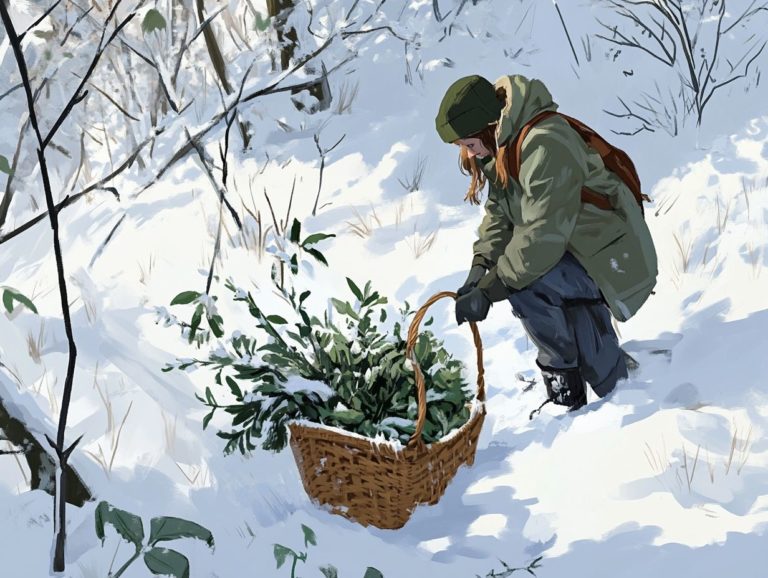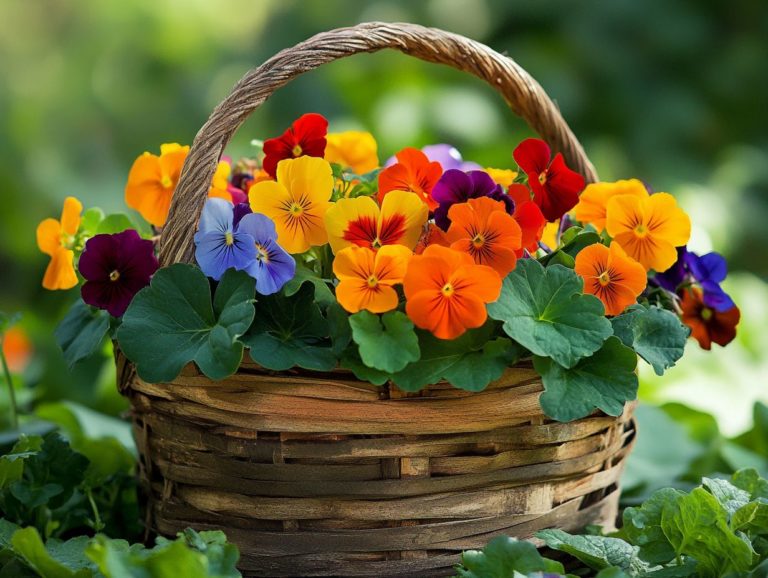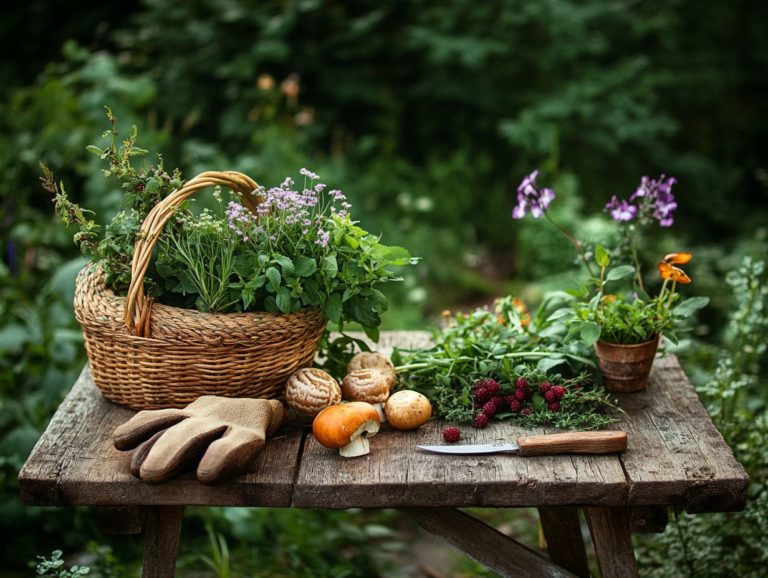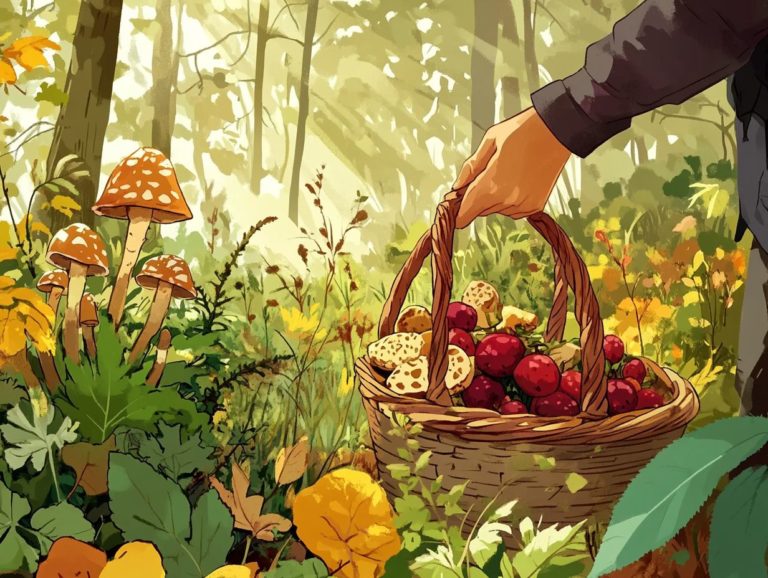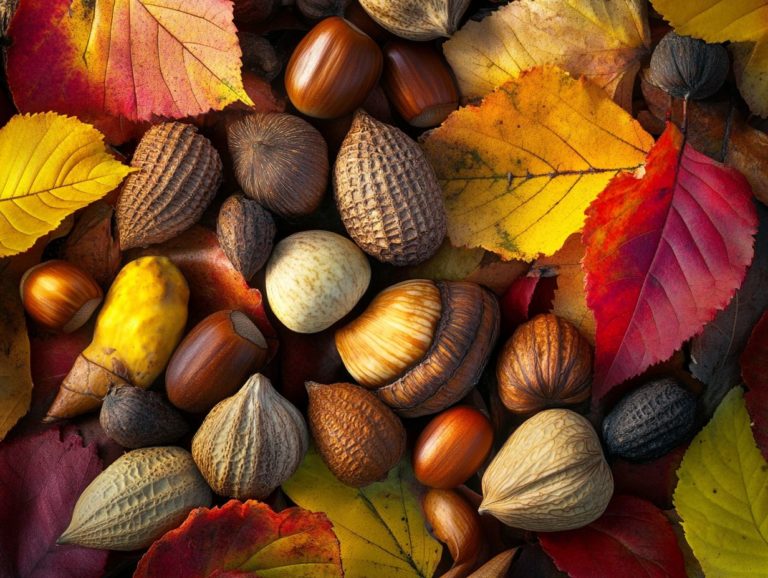Autumn Foraging: 5 Wild Fruits to Look for This Fall
As autumn transforms the landscape into a canvas of vibrant colors, now is the perfect moment for you to embrace the art of wild foraging. This season beckons you to explore nature’s generous bounty, with wild fruits just waiting to be discovered in the crisp autumn air.
Imagine sinking your teeth into succulent blackberries or the intriguing flavor of persimmons. These natural delights invigorate your palate and come packed with many nutritional benefits, making them perfect for your autumn foraging adventures.
This article provides a guide to five wild fruits to seek out, along with their culinary uses and essential tips for harvesting safely and sustainably. You’ll also learn about potential risks and common pitfalls to avoid on your adventure.
Get ready to discover the wild! Let s dive in!
Contents
Key Takeaways:
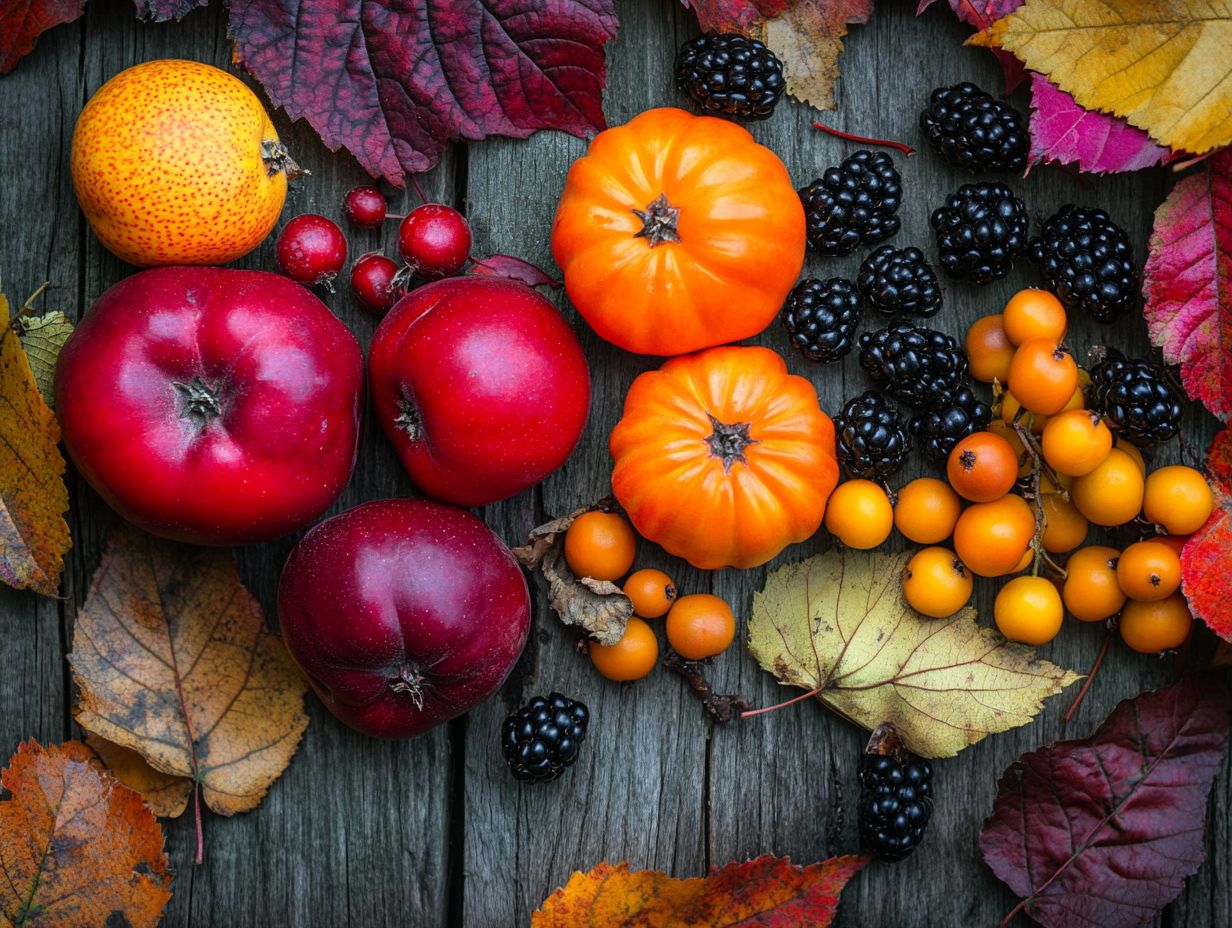
- Blackberries, elderberries, apples, persimmons, and rosehips are delicious wild fruits to forage during the fall, enhancing your experience of nature exploration.
- Foraging for wild fruits is a fun outdoor activity that offers numerous health benefits, contributing to your overall wellness.
- When foraging, it s important to know the benefits of these fruits, how to use them in cooking and baking, and the potential risks to avoid, such as misidentifying plants like wild onion or chickweed.
1. Blackberries
Blackberries are a delightful wild fruit that grace the landscape in the fall, making them a coveted treasure for those who relish foraging and the beauty of nature.
These berries flourish in various environments, often found on thorny bushes along sunny hiking trails, meadows, and forest edges. They are not just a treat for the senses; rich in essential nutrients, blackberries are particularly celebrated for their impressive vitamin C content, which promotes skin health and boosts your immune system.
As autumn unfolds, keep an eye out for the deep purple-black hue, signaling ripeness not just for blackberries but also for wild grapes and elderberries. You can easily gather these treasures while enjoying outdoor adventures, and for insights on what to look for, check out fruit picking season. It’s a splendid way to enhance your survival skills and appreciate autumn’s delights. Just remember to wear gloves to protect yourself from thorns, and stay aware of local wildlife that may also be eyeing this delicious bounty.
2. Elderberries
Elderberries, often seen clustered on shrubs, are remarkable wild foods celebrated for their delightful flavor and many health benefits as a natural remedy during the autumn foraging season.
These resilient plants prefer damp, fertile environments and can be easily identified by their serrated leaves and small white to cream-colored flowers that bloom in early summer, making them essential for any wild food guide. By honing your skills in identifying and foraging for elderberries, you can enhance your survival skills and explore various wild edible plants in your area.
This knowledge opens the door to creating herbal remedies like syrups and tinctures, known for their immune-boosting properties, which can complement your collection of natural remedies.
It’s vital to harvest elderberries at their peak ripeness while avoiding unripe berries, which can harbor toxins. Practicing proper harvesting not only ensures the sustainability of these plants but also enriches your outdoor experiences, allowing you to reconnect with nature while gathering nourishing ingredients.
3. Apples
Apples are a classic sign of autumn. You can often find them in the wild, along with other delightful edibles. For more information, check out the top local spots for autumn foraging in your area, offering you delectable and edible fruits that elevate your outdoor experiences during the fall season.
You ll discover various wild apple varieties, like crabapples and wild sweet apples. Each brings its own unique flavors and nutritional benefits to your foraging adventure.
These hidden gems are a delightful treat waiting to be discovered! They are brimming with essential vitamins such as A and C, along with dietary fiber that supports your overall health.
As you explore, you may find that these apples help fight harmful substances in the body. Including them in your foraging repertoire promotes sustainable eating and deepens your connection with nature’s offerings.
4. Persimmons
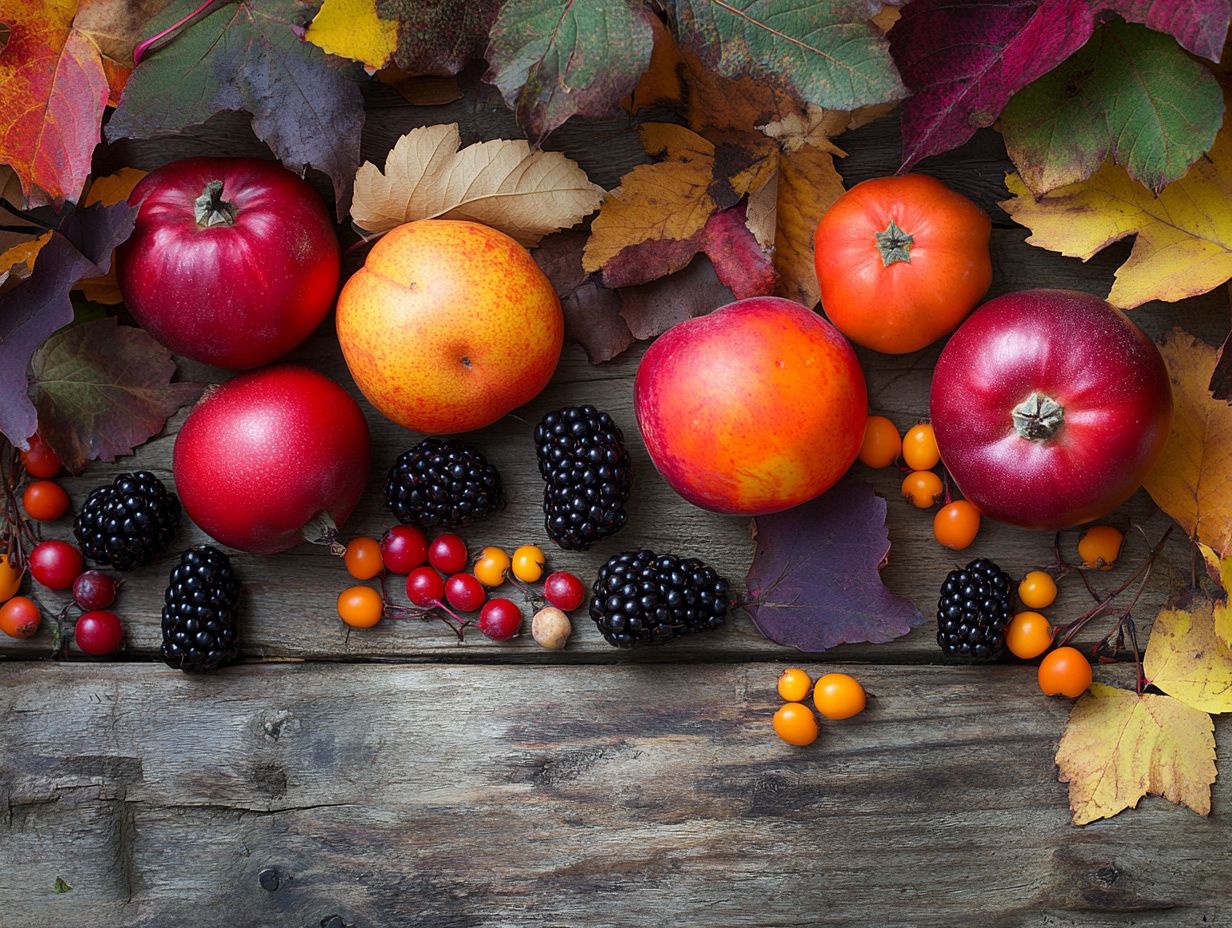
Persimmons are a delightful find in the wild during the fall. They make a tasty delicacy for those eager to immerse themselves in nature s bounty.
These vibrant orange gems have a sweet, honey-like flavor. Their smooth, glossy skin and flattened tomato-like shape are perfect for autumn harvesting.
Some persimmons can be astringent until fully ripe, so select the ones that yield gently to pressure. You can enjoy them fresh, dried, or in salads, smoothies, and autumn-inspired desserts.
Their rich vitamin content makes them invaluable for survivalists, who appreciate their taste and significance in sustainable foraging practices.
5. Rosehips
Rosehips, the delightful fruits of wild roses, are often underrated. They are an exceptional source of vitamin C, making them a perfect addition to your wild foods collection.
These vibrant red or orange berries are identifiable by their oval shape and cheerful clusters on thorny branches. They add richness to your foraging escapades and natural remedies.
Mastering the art of utilizing rosehips can be advantageous. They pair well with wild nuts like hickory nuts and black walnuts.
Preparation is simple just steep dried hips in hot water or simmer them with sugar to create delightful preserves. Enjoy the fruits of your wild harvest!
Whether you re a survivalist at heart or a culinary enthusiast, rosehips offer something special in the realm of wild foods.
Get outside and start your foraging adventure today! Foraging for these wild treasures not only nourishes your body but also enriches your spirit.
Why Is Foraging for Wild Fruits Beneficial?
Foraging for wild fruits offers remarkable benefits. It deepens your connection to nature and provides healthy food options, including edible mushrooms to look for in fall, that enhance your well-being.
This fun activity encourages you to step outside and enjoy the stunning beauty around you. You’ll promote an active lifestyle while exploring nature.
Using sustainable foraging methods helps you connect with your environment. You ll learn to identify wild edibles and gain confidence in sourcing your food, enabling you to make healthier dietary choices.
What Are the Nutritional Benefits of These Wild Fruits?
Wild fruits are packed with vitamin C and antioxidants. These nutrients are essential for your health, especially in the fall when foraging for edible fungi peaks.
These fruits provide vitamins like A for eye health and K for blood clotting. They also contain minerals like potassium for blood pressure and magnesium for muscle function.
Adding wild fruits like berries and wild apples to your diet boosts your immunity and skin health. Their fiber content aids digestion, keeping your gut healthy.
Embracing these nature-sourced treasures can significantly enhance your overall wellness and vitality as the seasons shift, allowing you to enjoy the benefits of seasonal harvests.
How Can These Wild Fruits Be Used in Cooking and Baking?
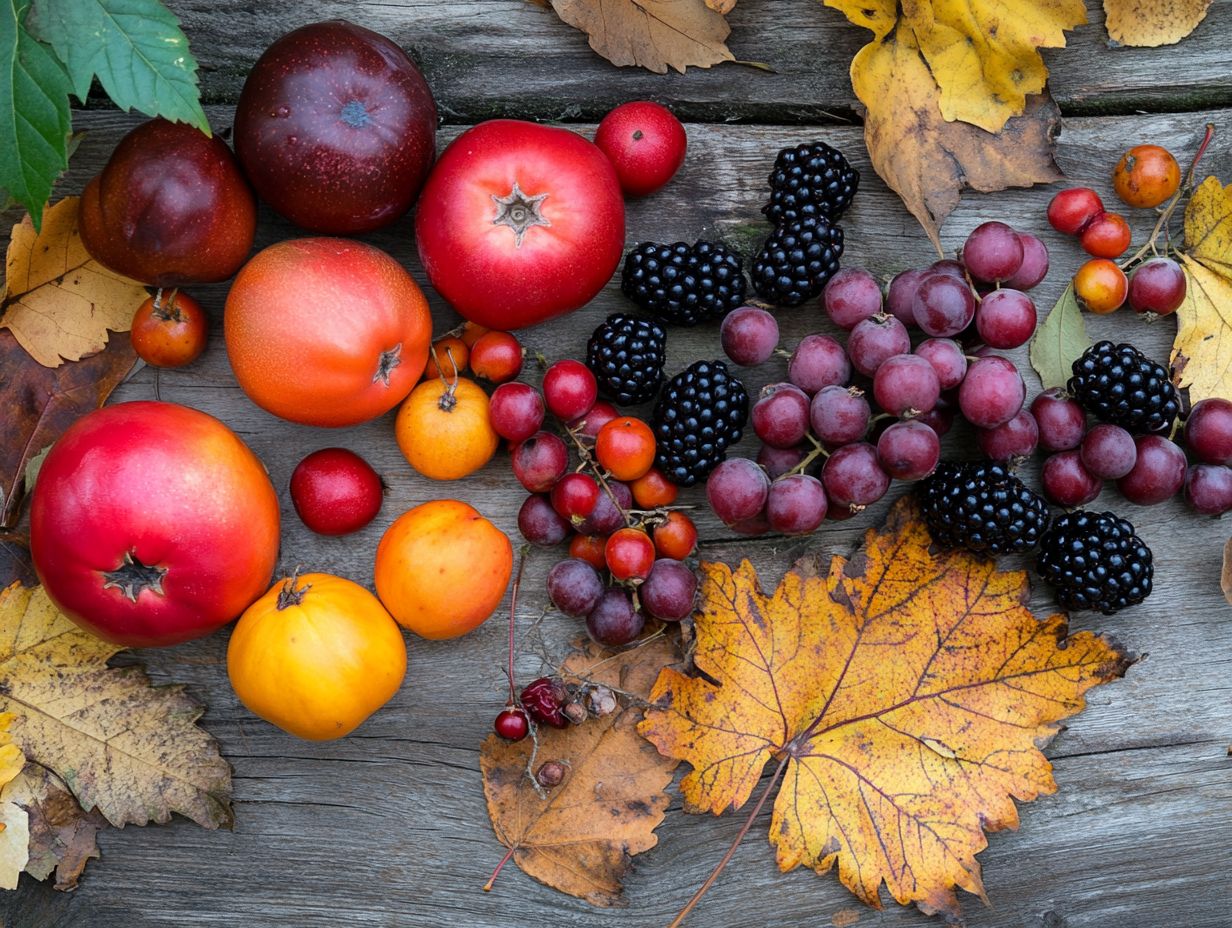
Wild fruits are perfect for adding unique flavors to your meals. For those interested in exploring more options, winter foraging offers exciting choices that make cooking fun and engaging during the fall harvest.
Try making homemade jams or delightful desserts like pies with wild berries. You can even use crab apples and wild cherries to create savory dishes that stand out.
As you forage, learn about the habitats where these fruits grow. This knowledge helps you pick the freshest options and connects you more deeply to nature.
Ready to discover the wonders of foraging? Get ready to step outside and start foraging today!
What Are the Risks of Foraging for Wild Fruits?
Foraging for wild fruits can be a rewarding adventure, but it comes with risks, primarily the potential for misidentifying plants. This misstep could lead to consuming inedible or toxic varieties. Strong plant identification skills are essential, especially when targeting autumn delights like the best wild fruits to forage in summer.
Understanding plant shapes and types is important, as many safe fruits to eat have toxic look-alikes. For instance, mistaking a wild cherry for a poisonous chokecherry could lead to serious health consequences. This highlights the need for strong survival skills in the wild.
To navigate this safely, rely on trustworthy field guides or smartphone apps that specialize in local flora. Engaging in outdoor activities, like autumn foraging, alongside experienced individuals can provide valuable insights and firsthand knowledge.
Always start with small amounts of any new edible plant to watch for adverse reactions. Being cautious and informed is crucial to ensure a safe and enjoyable foraging adventure!
What Are Some Tips for Safe and Sustainable Foraging?
Safe and sustainable foraging practices are vital for ensuring that wild harvesting remains a viable pursuit. This allows you to explore nature while helping preserve ecosystems and promoting the biodiversity of edible plants. These practices enhance your overall health benefits from these nutrient-rich foods.
When gathering fruits and other edibles, understanding the guidelines of ethical harvesting is essential. Approach each discovery with the mindset of leaving enough behind for wildlife. Take only what you need and avoid depleting populations of rare or endangered plants.
Respecting wildlife habitats is crucial. Stay clear of areas critical for nesting or foraging for animals, like wintergreen patches. This approach fosters a balanced ecosystem, ensuring both you and wildlife can coexist harmoniously.
What Are Some Common Mistakes to Avoid When Foraging for Wild Fruits?
When venturing into foraging for wild fruits, it’s easy to stumble into common pitfalls that can turn a delightful experience into a disappointing or even dangerous one. This shows just how important it is to have accurate plant identification and knowledge of safe fruits to eat, including chickweed and lambs quarters.
Failing to distinguish between edible and toxic plants can have severe health repercussions. Overlooking local regulations might land you in legal hot water. For those new to foraging, it’s vital to dedicate time to learning about the specific species in your area and to adopt sustainable practices to avoid over-harvesting.
Engaging with local foraging groups, consulting reputable field guides, and participating in workshops can significantly enrich your understanding. This proactive approach enhances your foraging experience and fosters responsible harvesting techniques that benefit both the ecosystem and you.
Frequently Asked Questions
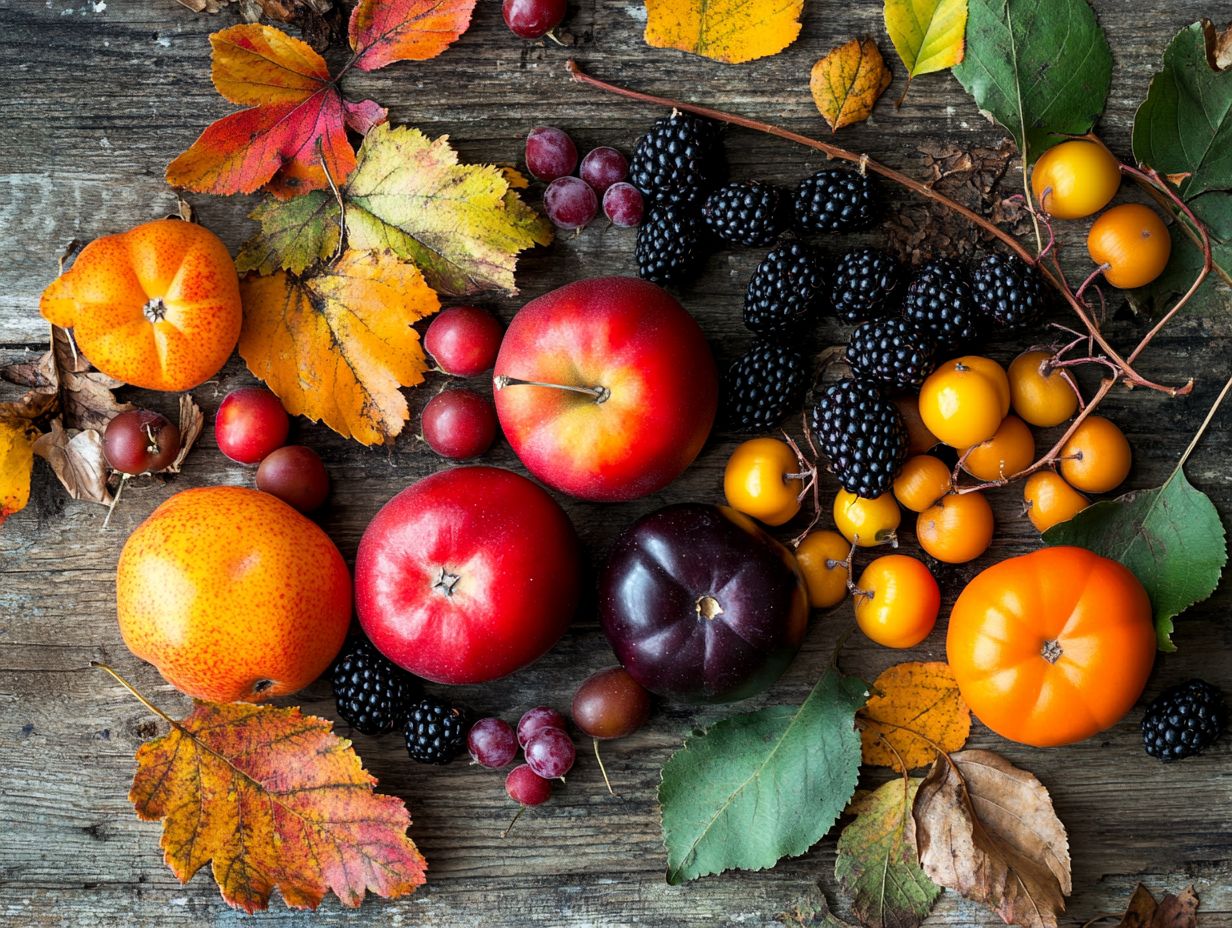
Curious about common wild fruits to forage for in the fall?
Some common wild fruits to look for in the fall include elderberries, blackberries, crabapples, rose hips, wild grapes, and top wild nuts to forage.
Wondering where to find these wild fruits?
These wild fruits can be found in various locations such as parks, forests, and even in your own backyard. Look for them near trees, bushes, and along hiking trails or near wild onion patches.
How can I tell when these wild fruits are ripe?
Each fruit has its unique signs of ripeness. For example, elderberries turn dark purple, while blackberries are plump and dark in color. Research the specific fruit you are looking for, such as persimmon, to determine when it is ripe.
We’d love to hear your foraging experiences or tips! Share them with us and join our community!
Are these wild fruits safe to eat?
As long as you correctly identify the fruit and ensure it’s free from pesticides, these wild fruits are safe to eat. It’s a great idea to check in with a local expert before trying any wild fruits.
Can I use these wild fruits in recipes?
Absolutely! These fruits can jazz up a variety of recipes like jams, pies, and even drinks. You can also get creative by adding mushrooms and acorns to your dishes.
Just remember to clean and prepare the fruits properly before using them.
What precautions should I take when picking wild fruits?
Always be careful when picking wild fruits. Make sure you identify them correctly and ensure they are safe to eat.
Watch out for hazards in the area, like thorns or poison ivy.

